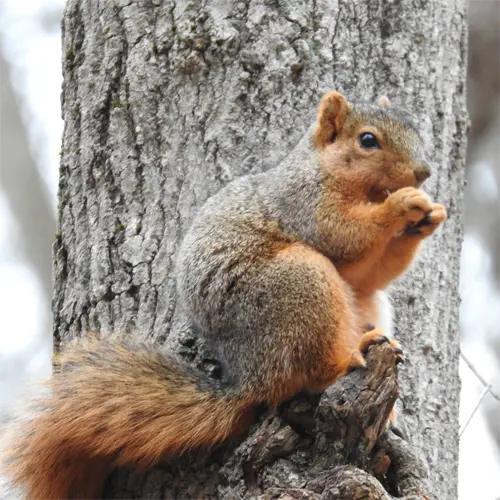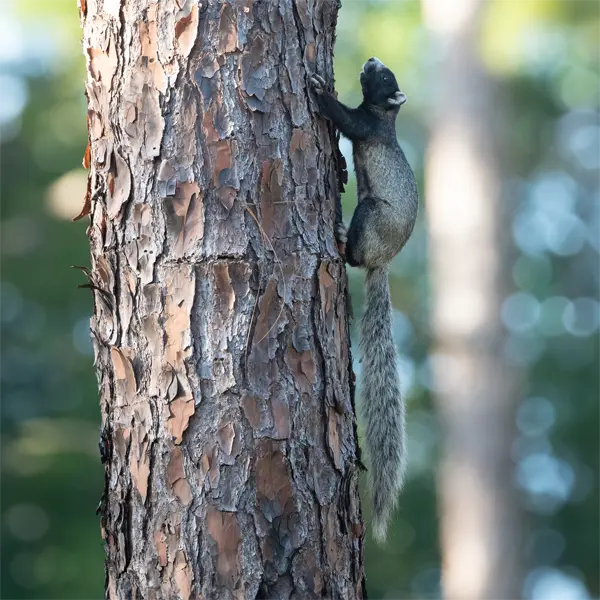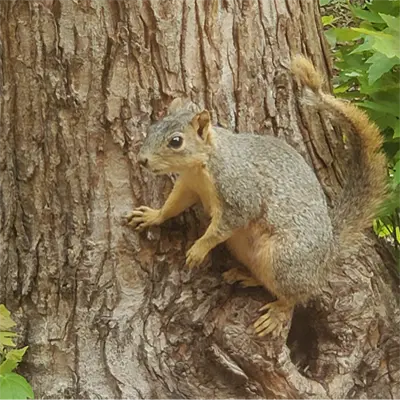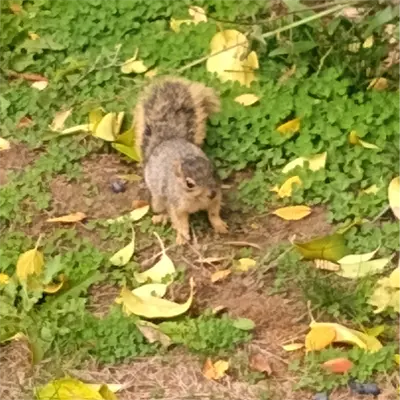Fox Squirrels in Central Florida
The eastern fox squirrel (Sciurus niger) is a common tree squirrel found throughout central Florida. Often confused with the gray squirrel (Sciurus carolinensis), fox squirrels can be identified by their reddish fur, large size, and bushy tail. This adaptive rodent thrives in diverse habitats from rural areas to urban parks and neighborhoods.
This comprehensive guide provides detailed identification tips, biology facts, and prevention methods for fox squirrels in central Florida. Read on to learn fox squirrel habits, reproduction, diet, health risks, signs of activity, and control options if populations become problematic.
Fox Squirrel Subspecies
Sherman’s Fox Squirrel
The Sherman’s fox squirrel is a subspecies of the eastern fox squirrel found only in central and northern Florida. Its range is focused on oak hammocks and pine forests unique to the Florida peninsula.
Compared to other eastern fox squirrels, the Sherman’s is larger in size and has mostly gray fur. It is the biggest tree squirrel species in the state.
Research on its genetics and physical traits shows it is different enough from other populations to be its own distinct subspecies.
The Sherman’s is adapted to the pine-oak forests of Florida where it lives. Its small range in the state and genetic uniqueness make it an important subspecies to study and protect.
Appearance and Identification
Fox squirrels can be distinguished from other tree squirrels by their size and coloration
Maturation Rate
Fox squirrel kits develop rapidly due to the long breeding season and mild climate in central Florida. They open their eyes by 4 weeks old and are fully furred by week 6. Kits begin venturing from the nest at 8 to 10 weeks old and are weaned by month 2 or 3. They are nearly adult sized by 5 to 6 months old and able to breed in their first year.
Habits and Behavior
Fox squirrels are diurnal and most active 2-3 hours after sunrise until mid-morning. They may emerge again late afternoon but spend hot mid-day periods resting. Fox squirrels do not hibernate but may den together during severe winter weather.
Fox squirrels inhabit mixed stands of oak, pine, palm trees, and cypress throughout central Florida. They prefer areas with dense understory vegetation and available tree cavities for nesting. Fox squirrels are agile climbers but spend considerable time foraging on the ground as well.
Home ranges average 5 to 100 acres but can exceed 300 acres in some rural regions. Fox squirrels are not highly territorial but have a core nesting area. Density ranges from 2 to 6 squirrels per acre depending on the habitat quality.
Reproduction and Lifespan
Fox squirrels can breed twice per year, once in early spring and again in summer. The gestation period is about 44 to 45 days. Females produce 1-7 young per litter, with 2-4 being average. The kits are born hairless and helpless, opening their eyes at around 4 weeks old.
Weaning occurs at 2 to 3 months of age but kits may stay with the mother until their first winter. Females may nest communally, sharing care of the young. Fox squirrels reach sexual maturity by 1 year old. With predation, their average lifespan is 5 to 7 years in the wild but they may live up to 12 years.
Ideal Habitat and Range
Central Florida’s warm, humid climate enables fox squirrels to breed year-round and find adequate food. Mature oak-pine forests interspersed with palm trees and suburban areas provide ideal fox squirrel habitat. Average temperatures range from 60°F to 90°F (15°C to 32°C) with about 50 inches annual rainfall.
These conditions allow oak, pine, palm, and cypress trees that fox squirrels prefer to thrive. Ample tree seeds, buds, fruits, berries, fungi, and insects sustain fox squirrel populations. Developed areas provide supplemental food from bird feeders and gardens. The mild climate also reduces harsh winter mortality.
Diet and Feeding
Fox squirrels are primarily herbivores, feeding on a variety of plant matter:
- Acorns, nuts, and seeds of oak, pine, palm, cypress, maple and other trees. Pecans and hickory nuts are favorites.
- Buds, shoots, flowers, and leaf stems from trees and shrubs.
- Fruits including wild berries, citrus, figs, and avocados.
- Fungi like mushrooms are consumed opportunistically.
- Garden vegetables, grains from bird feeders, and ornamental plantings may be eaten.
Fox squirrels also occasionally eat insects, bird eggs and nestlings for supplemental protein. Bark stripping of trees also occurs, especially by juvenile squirrels.Fox squirrels forage mainly in the morning and late afternoon, caching excess food to retrieve later. Each squirrel makes hundreds of small caches scattered across their territory.


Common Dangers
Fox squirrels rarely pose direct health risks to humans. However, concerns include:
- Bites – Fox squirrels have sharp teeth and claws that can inflict painful bites if handled. Have any bite evaluated for infection risk.
- Damage – Fox squirrels may cause considerable damage to buildings, insulation, gardens, and orchards. They also strip bark and clip twigs from trees which can weaken and kill branches.
- Power outages – Chewing on electrical wires may cause short circuits and power outages.
- Transmission of infections – Fox squirrels may occasionally carry bacterial diseases like tularemia, typhus, and plague. The risk is very low but have dead specimens tested if abundant die-offs occur.
- Traffic hazards – Dashing fox squirrels are a common sight on Florida roads. Drive cautiously, especially near woodland edges.
Preventing Fox Squirrel Infestations
As native wildlife, lethal control of fox squirrels is not recommended and may be illegal without proper permits. Non-lethal techniques to reduce localized damage should be used first:
- Removing food attractants – Take down bird feeders during summer, install metal guards over gardens, and keep ripe fruits picked.
- Exclusion – Cap chimneys, repair eaves, and seal openings to deny attic access. Use tree bands to prevent climbing.
- Scare tactics – Repellents, predator decoys, water sprayers, and noise makers may provide temporary deterrence.
- Habitat modification – Thinning dense brush and removing unneeded woodpiles reduces the cover squirrels prefer.
- Nest destruction – Removing leaf nests after the breeding season can discourage re-nesting in problem sites.
Lethal control such as regulated trapping or hunting should only be considered as a last resort if all other options fail. Be sure to consult wildlife authorities and have proper permits before taking any action to reduce the fox squirrel population. Focus control efforts on exclusion, deterrence, and habitat modification first.

Fox Squirrel in Central Florida – Conclusion
The fox squirrel is an athletic and adaptable rodent that thrives throughout central Florida’s oak-pine forests, parks, and neighborhoods. While fox squirrels rarely pose health risks, their gnawing and consumption of garden produce can cause localized problems.
Prevent access to homes, orchards, and gardens using exclusion and deterrents. Enjoy observing these energetic squirrels from a distance as part of Florida’s rich wildlife heritage but take sensible precautions against damage issues.
With some awareness and prevention, fox squirrels can be appreciated as an iconic element of natural areas without becoming nuisance pests.








